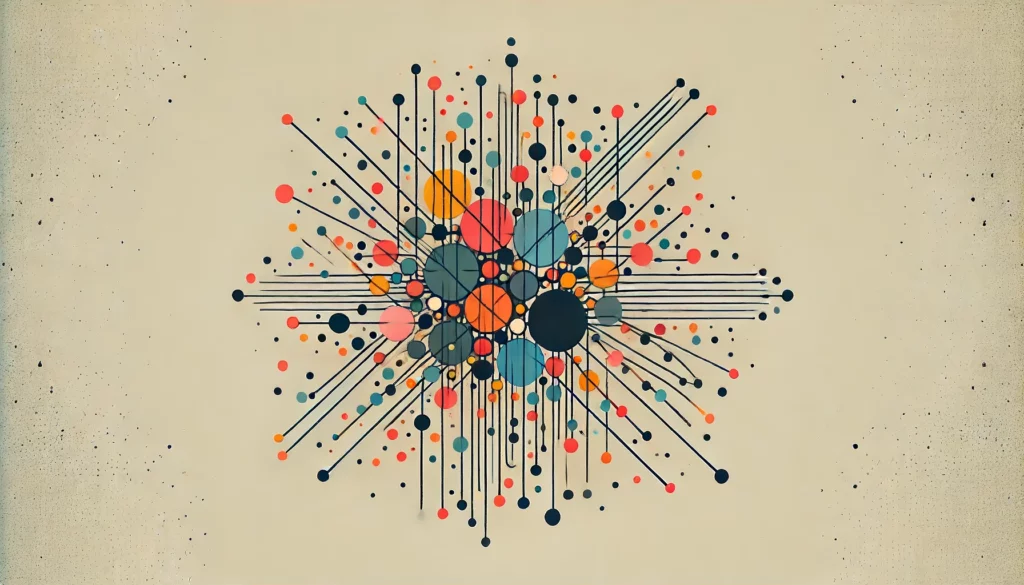Data Clustering: What It Is and Its Applications
- Aguru

Introduction
Data clustering is a foundational technique in data analysis and machine learning, allowing us to find hidden patterns and group similar data points together without prior labeling. This method is pivotal in transforming unstructured data into actionable insights by identifying clusters or groups within the data based on their similarities.
Various clustering algorithms are popular among data scientists, including K-means, hierarchical clustering, DBSCAN, and HDBSCAN. Each algorithm has its strengths and is chosen based on the specific characteristics and needs of the data.
In this blog post, we will focus on the HDBSCAN algorithm, which is integral to our Aguru solution. We’ll explore how it works, its distinct advantages, and the unique ways we use it to drive value.
What is HDBSCAN?
Hierarchical Density-Based Spatial Clustering of Applications with Noise, or HDBSCAN, extends the DBSCAN algorithm by turning it into a hierarchical clustering method. This enhancement allows HDBSCAN not just to identify core clusters, but also to manage noise more effectively and adjust to varying density clusters.
Advantages of HDBSCAN
HDBSCAN excels over other clustering algorithms in several ways:
- Flexibility: Unlike traditional algorithms such as K-means which require pre-specification of the number of clusters, HDBSCAN adapts to the data’s intrinsic properties, determining the clusters dynamically. This flexibility makes it especially potent for complex and varied datasets.
- Noise management: HDBSCAN excels at separating noise, treating it as its own cluster rather than forcing it into clusters where it doesn’t belong, ensuring cleaner and more meaningful clustering.
- Shape versatility: Unlike K-means, which assumes clusters are spherical, HDBSCAN can identify clusters of arbitrary shapes, accommodating a wider variety of data patterns.
- Parameter efficiency: Requires minimal tuning, making it user-friendly and less prone to human error compared to DBSCAN and similar methods.
Use Cases of HDBSCAN in Various Fields
HDBSCAN’s adaptive and powerful clustering capabilities make it applicable across a broad range of scenarios:
- Data classification: HDBSCAN efficiently organizes unstructured data into meaningful clusters in minutes – a task that is otherwise tedious and time-consuming when done manually. This accelerates the classification process for large sets of unstructured data.
- Training data improvement: By combining visualization tools with HDBSCAN, users gain a clear understanding of the relationships between various clusters and outliers, which might not be apparent from raw data alon. This clarity helps quickly pinpoint data errors, systematic model failures, and potential biases in models.
- AI app use cases: HDBSCAN groups prompts into semantically similar clusters, swiftly revealing distinct use cases and sparse queries within AI applications. At Aguru, clustering is integrated into solutions to help businesses understand user patterns and the performance of different LLM models across clusters, offering a comprehensive perspective.
- Customer segmentation: Businesses can use HDBSCAN to segment customers based on purchasing behavior, website interaction patterns, and other characteristics. This segmentation can help tailor go to market strategies to different customer groups based on their behavior.
- Biological sciences: In bioinformatics, HDBSCAN can cluster genetic data to identify groups of genes with similar expression levels, which can be crucial for understanding gene function and gene-disease associations.
- Security: With its effective noise management, HDBSCAN excels at identifying outliers or anomalies, which is invaluable for fraud detection in financial services and enhancing network security.
Role of Clustering in Aguru’s Solution
In our Aguru platform, we leverage HDBSCAN to semantically cluster prompts, enhancing our service in several ways:
- Quality metrics for prompts: The system automatically analyzes prompts and calculates metrics such as the Silhouette score, Calinski-Harabasz score, and Davies-Bouldin score to assess clustering quality. These metrics help determine how well-defined and distinct each cluster is, the density and separation of clusters, and the average similarity between clusters. This analysis is crucial for LLM output quality evaluations. When prompts are sparse or not densely populated, the reliability of output quality evaluations may be compromised. In such scenarios, it may be more practical to rely on consistently high-performing models like GPT-4, rather than attempting to select the best LLM model based on less reliable data.
- Understanding use cases: Aguru effectively categorizes prompts into clusters, revealing distinct user behavioral patterns. This allows you to tailor your AI applications to better align with user behaviors or respond swiftly to abnormal or risky actions.
- Performance insights by cluster: By integrating LLM routing, caching, and clustering, Aguru delivers comprehensive insights at the cluster level. We track critical metrics such as the number of prompts, total spent, prompt and completion tokens, cache hits, response times, and quality scores across various LLM models. This data provides a transparent view that empowers you to make strategic decisions, optimizing both performance and resource allocation effectively.
- Enhanced visualization for clarity and insight: To unlock the full potential of HDBSCAN, our platform incorporates advanced visualization techniques. These techniques effectively showcase how clusters are interconnected and the density within each cluster, providing a clear, hierarchical view of data groupings. Additionally, our interactive graph enhances user engagement by revealing more details about prompts as users hover over different sections, allowing for a deeper understanding and exploration of the data.
Conclusion
HDBSCAN clustering approach provides a robust foundation for understanding complex datasets, optimizing LLM performance, and delivering personalized AI-driven solutions. With HDBSCAN’s powerful clustering and visualization capabilities, Aguru is equipped to offer clearer insights and make more informed decisions.
